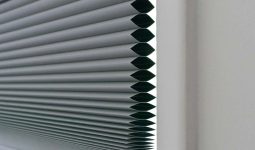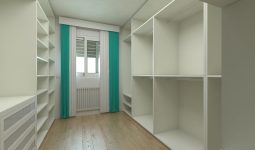In the evolving world of interior design, window treatments have transitioned from mere functional necessities to pivotal design elements that accentuate the overall aesthetic of a space.
Among these, window blinds hold a special place, blending timeless appeal with modern functionality.
This guide explores the trajectory of window blind trends, from classic designs that have adorned homes for decades to contemporary styles that cater to the modern homeowner’s desire for elegance, privacy, and light control.
Classic Blinds: A Timeless Addition to Any Home
Classic window blinds have been a staple in home design for centuries.
These tried and true styles never go out of fashion, providing a sense of familiarity and comfort while adding an elegant touch to any room.
Some popular choices among classic blinds include:
- Venetian Blinds: Originating from Venice in the 18th century, these horizontal slatted blinds are made of wood or metal and can be adjusted to control light and privacy.
- Roman Blinds: Dating back to ancient Rome, these fabric blinds fold into neat pleats when raised and lay flat when lowered, creating a timeless look that complements any room decor.
- Roller Blinds: Simple and functional, roller blinds consist of a single piece of fabric that rolls up onto a tube when raised. They are available in various fabrics, patterns, and colors to suit any interior style.
Contemporary Blinds: Modern Innovations for Style and Functionality
While classic blinds continue to charm, contemporary designs have emerged to cater to homeowners’ changing needs and preferences.
These modern twists on traditional styles offer advanced features for improved light control, energy efficiency, and convenience.
Some contemporary window blind trends include:
- Motorized Blinds: Motorized blinds allow you to adjust your window treatments from anywhere in the room with the push of a button or through smartphone integration. This feature is convenient and adds a touch of luxury to your home.
- Honeycomb/Cellular Shades: These innovative shades are designed with honeycomb-shaped cells that provide insulation, making them an energy-efficient option for any room. They also come in various colors and opacities to suit your privacy needs.
- Smart Blinds: Smart blinds are equipped with sensors that adjust them based on natural light and temperature. They can also be programmed to open and close at specific times, making them perfect for energy-conscious homeowners.
Tips for Choosing the Perfect Window Blinds
With so many options available, choosing the right window blinds for your home can be overwhelming.
Here are a few tips to help you make an informed decision:
- Consider the functionality you need. Do you want complete light control or just enough privacy? Are energy efficiency and convenience important factors?
- Think about the style of your room and choose blinds that complement it. Classic blinds work well in traditional spaces, while contemporary designs are better suited for modern and minimalist decor.
- Pay attention to the material of the blinds. Wood and metal offer a more classic look, while fabric provides a softer touch.
- Don’t be afraid to mix and match different window treatments in one room for a unique and personalized look.
Additional Factors to Consider
When selecting window blinds for your home, it’s crucial to consider various factors beyond style and functionality.
These considerations will ensure that your choice not only enhances the aesthetic appeal of your space but also caters to your specific needs and preferences.
Here’s a detailed list of factors to keep in mind:
- Room Specific Needs: Different rooms may require different types of blinds. For instance, moisture-resistant materials like PVC or faux wood are ideal for bathrooms and kitchens, whereas bedrooms may benefit from blackout blinds for better sleep quality.
- Window Dimensions and Orientation: The size and orientation of your windows can greatly influence your choice of blinds. Larger windows may benefit from motorized blinds for ease of use, while south-facing windows might need UV protection to prevent furniture from fading.
- Safety Considerations: If you have children or pets, opt for cordless blinds or those with safety features to prevent accidents. Cordless blinds are safer and offer a cleaner, more streamlined look. Certified window treatment installers will know to tell you more about the safety of each type.
- Maintenance and Durability: Consider how easy the blinds are to clean and how durable they are over time. Metal and wood blinds might require more maintenance but are often more durable than fabric blinds, which can be easier to clean but may need to be replaced more frequently.
- Energy Efficiency: Some blinds, like honeycomb shades, offer exceptional insulation, which can help reduce your energy bills by keeping your home warmer in the winter and cooler in the summer.
- Privacy and Light Control: Assess the privacy and light control level you need. Different blinds offer varying degrees of both, from sheer fabrics that allow light in while keeping eyes out to opaque blinds that offer complete privacy and darkness.
- Budget: Window blinds come in a wide range of prices, from affordable vinyl options to high-end custom designs. Determine your budget beforehand, and remember that investing in quality can save money in the long run due to longer lifespans and energy savings.
- Integration with Home Automation Systems: If you have a smart home system, consider blinds that integrate seamlessly with your existing setup. This allows for convenient light control and privacy settings through your smart home system.
Conclusion
Window blinds offer a versatile and practical solution for enhancing your home’s privacy, light control, and aesthetics.
From classic designs to contemporary innovations, many options suit your needs and preferences.
When choosing window blinds, consider functionality, style, room-specific needs, and integration with home automation systems.
With careful consideration, you can find the perfect window blinds to elevate the look and functionality of your home.








